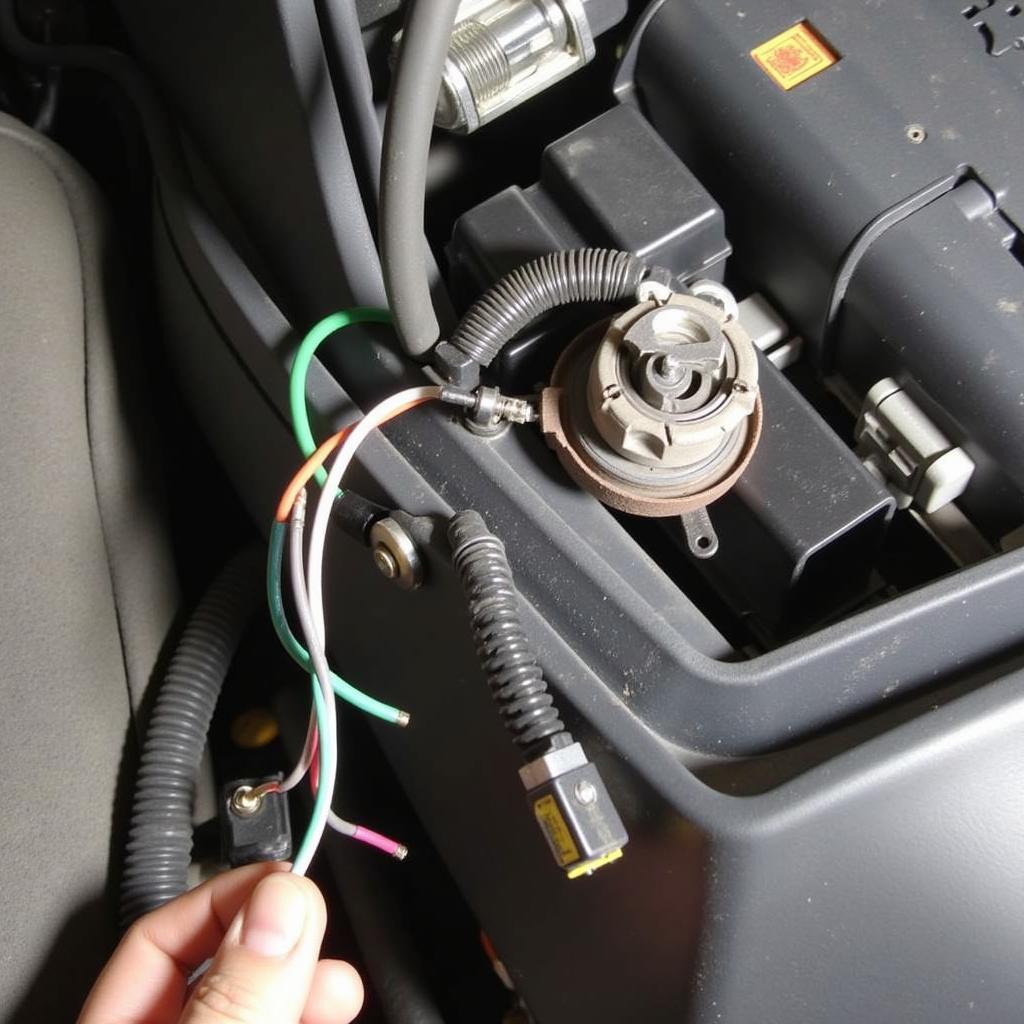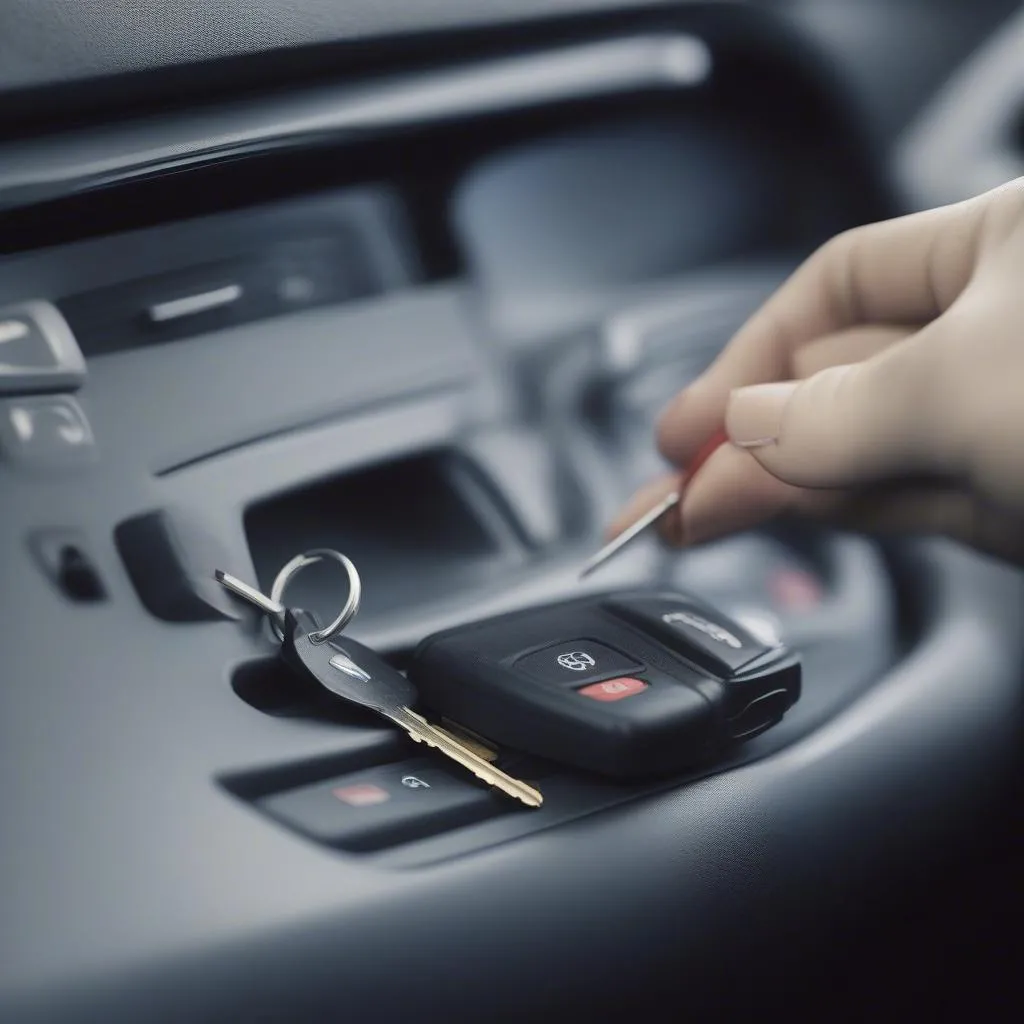Experiencing a glowing ABS and brake warning light in your Saab 9-3 can be unnerving. These lights are your car’s way of signaling a potential problem within the braking system, requiring immediate attention. While it can seem daunting, understanding the common causes and knowing how to address them can save you time, money, and potential hazards on the road.
This comprehensive guide delves into the possible triggers behind a Saab 9-3 ABS and brake warning light, providing you with the knowledge to diagnose and potentially resolve the issue.
Decoding the Warning Lights
Before diving into the causes, it’s crucial to understand what each warning light signifies:
- ABS Warning Light: This light, often amber or yellow, indicates an issue with the Anti-lock Braking System (ABS). While your regular brakes might still function, the ABS, designed to prevent wheel lock-up during hard braking, may be compromised.
- Brake Warning Light: This light, usually red, points towards a problem within the main braking system. It could be anything from low brake fluid to a critical malfunction, requiring immediate attention.
Seeing both lights illuminated simultaneously usually suggests an ABS issue affecting the overall braking system.
Common Culprits Behind the Warning Lights
Several factors can trigger the ABS and brake warning lights in your Saab 9-3. Here are the most common culprits:
1. Faulty ABS Wheel Speed Sensors
ABS wheel speed sensors, located at each wheel, monitor wheel speed and relay this information to the ABS control module. A malfunctioning sensor can disrupt this data flow, prompting the warning lights.
Troubleshooting Tip: Inspect the sensors for damage or debris. A simple cleaning or replacement might resolve the issue.
2. Worn-Out Brake Pads
Brake pad wear is a common cause of the brake warning light. As the pads thin out, a sensor within the brake system triggers the light, indicating it’s time for a replacement.
Troubleshooting Tip: Check your brake pad thickness. If they’re nearing their wear limit, replacing them is essential.
3. Low Brake Fluid
Brake fluid is the lifeblood of your braking system. A leak in the system or severely depleted fluid can trigger both warning lights.
Troubleshooting Tip: Inspect the brake fluid level in the reservoir. If it’s low, refill it to the recommended level. However, persistent low fluid indicates a leak requiring immediate professional attention.
4. Malfunctioning ABS Module
The ABS module acts as the brain of the ABS system. If it malfunctions due to electrical issues or internal faults, it can disrupt the entire system, triggering the warning lights.
Troubleshooting Tip: Diagnosing a faulty ABS module requires specialized diagnostic equipment. It’s recommended to consult a qualified mechanic for inspection and potential replacement.
5. Damaged Wiring and Connectors
 Damaged Wiring Harness
Damaged Wiring Harness
The ABS system relies on a network of wires and connectors to communicate with various components. Damaged wiring, loose connections, or corrosion can disrupt these signals, leading to warning lights.
Troubleshooting Tip: Visually inspect the wiring harness for any visible damage. Ensure all connectors are securely fastened.
Addressing the Warning Lights: Professional vs. DIY
While some issues, like worn brake pads or low brake fluid, can be addressed with basic mechanical skills, others require specialized knowledge and equipment.
If you’re comfortable with car maintenance, you can attempt troubleshooting simple issues. However, if the cause isn’t immediately apparent or involves the ABS module or electrical components, it’s best to consult a qualified Saab mechanic.
Saab 9-3 ABS and Brake Warning Light: Prioritizing Safety
Ignoring a saab 9-3 abs and brake warning light can compromise your safety and lead to costly repairs. Addressing the issue promptly ensures optimal braking performance and peace of mind on the road. Remember, a well-maintained car is a safe car.

